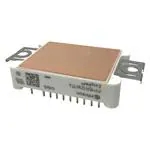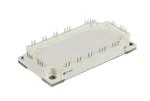This schematic shows you exactly how to hook up an ADXL345 using I²C. Just two wires (SDA and SCL) connect to your Arduino or STM32. Make sure you use 3.3V for power—not 5V. The CS pin goes to ground for I²C mode, and SDO to ground gives address 0x53 (high for 0x1D). Add 10k pull-ups to SDA and SCL for stable communication. INT pins can detect events like taps or free-falls; leave unused pins disconnected.
ADXL345 Beschleunigungsmesser vs. S2DW | Was ist ADXL345?
Entdecken Sie die Vielseitigkeit des 3-Achsen-Beschleunigungsmessers ADXL345 – ideal für Projekte mit Arduino, Raspberry Pi und 3D-Druckern. Nutzen Sie die Adafruit-Bibliothek für eine nahtlose Integration und erkunden Sie die Anschlussmöglichkeiten mit Arduino für eine präzise Datenerfassung.
- Marken: Analog Devices
- Herunterladen: -
- Preis: Anfrage
- Auf Lager: 20273
- Geschlecht des Kontakts: -
- Material: -
- Maximaler Bündeldurchmesser: -
- Paket: -

KOSTENLOSE Lieferung für Bestellungen über HK$250.00

Schnelle Reaktion, schnelles Angebot

Blitzversand, keine Sorgen nach dem Verkauf

Originalkanal, Garantie der authentischen Produkte
GY-291 ADXL345 3-axis Accelerometer Module Sensor
ADXL345
If you’re building devices like wearables, game controllers, or vibration sensors, the ADXL345 accelerometer is perfect. It precisely measures three-axis motion up to ±16g with 13-bit resolution. You can easily connect it via SPI or I²C to your MCU. Its 32-level FIFO reduces data-reading frequency, improving efficiency. Plus, features like free-fall detection and ultra-low power consumption (just 23μA) make it ideal for portable gadgets.
ADXL345 Pinout

| PIN-Nummer | Name | Funktionsbeschreibung |
|---|---|---|
| 1 | Masse | Ground (connected to system ground) |
| 2 | VDDIO | I/O interface supply (1.7V–3.6V), for logic level matching |
| 3 | SDI/SDIO | SPI data input / I²C data line (SDA) |
| 4 | SCLK | SPI clock / I²C clock line (SCL) |
| 5 | SDO / ALT ADDRESS | SPI data output / I²C address select (High = 0x1D, Low = 0x53) |
| 6 | CS | SPI chip select (active low); if tied high, device defaults to I²C mode |
| 7 | Masse | Secondary ground (must be connected) |
| 8 | VDD | Main power supply (2.0V–3.6V) |
| 9 | INT1 | Programmable interrupt output 1 (e.g., activity detection, free-fall) |
| 10 | INT2 | Programmable interrupt output 2 |
When you’re wiring up the ADXL345, pay attention to power: VDD for main power, VDDIO matches your MCU logic. For SPI, pull CS low; for I²C, pull CS high and set SDO pin for the address (low = 0x53, high = 0x1D). Add 4.7kΩ pull-up resistors on SDA and SCL in I²C mode. INT pins are handy for interrupts like motion detection. Align carefully when soldering to avoid mix-ups.
ADXL345 Equivalent




| Parameter / Modell | ADXL345 | LIS3DH | MMA8452Q | BMA280 |
|---|---|---|---|---|
| Hersteller | Analog Devices | STMicroelectronics | NXP | Bosch Sensortec |
| Paketgröße | 3×5×1 mm (LGA-14) | 3×3×1 mm (LGA-16) | 3×3×1 mm (QFN-16) | 2×2×0.95 mm (LGA-12) |
| Axis Count | 3 axes | 3 axes | 3 axes | 3 axes |
| Auflösung | 13-bit | 12-Bit | 12-Bit | 14-bit |
| Beschleunigungsbereich | ±2/4/8/16g | ±2/4/8/16g | ±2/4/8g | ±2/4/8/16g |
| Digital Interface | I²C / SPI | I²C / SPI | I²C | I²C / SPI |
| FIFO Support | 32-level FIFO | 32-level FIFO | 32-level FIFO | 32-level FIFO |
| Power Consumption (Typical) | 23 μA @ 10Hz | 11 μA @ 1Hz | 6 μA @ 1Hz | 2.4 μA @ 1Hz |
| Unterbrechungsfunktionen | Tap / Activity | Multiple event interrupts | Motion / Free-fall | Tap / Orientation |
| Betriebsspannung | 2.0–3.6 V | 1.8–3.6 V | 1.95–3.6 V | 1.2–3.6 V |
If ADXL345 isn’t available, LIS3DH is your best bet—it matches the ±16g range and SPI/I²C interfaces, uses less power, and is smaller, perfect for wearable devices. MMA8452Q is also an option but limited to ±8g and only supports I²C. BMA280 provides better accuracy (14-bit) and lower power but has a smaller package, making hand-soldering tricky if your PCB layout is already fixed.
ADXL345 Accelerometer Circuit Example

ADXL345 Arduino

This circuit shows you how to connect an ADXL345 accelerometer with an Arduino and a 16×2 LCD. It’s perfect for beginners. Just wire VCC/GND to 5V and GND on Arduino, SDA/SCL to pins A4/A5 for I²C. Your LCD connects via pins D2–D7. Check if your ADXL345 supports 5V—if not, switch to 3.3V. Use libraries like Adafruit or SparkFun to easily read and display X, Y, Z data on the LCD.
ADXL345 Project
Here’s a simple and practical ADXL345 project for beginners: build a tilt detector using Arduino (UNO or Nano), ADXL345 accelerometer, and a 16×2 LCD. Use I²C to easily read XYZ acceleration data and display them with directions like “Tilt: RIGHT” or “Flat.” Later you can add features like vibration alarms, data logging on an SD card, Bluetooth data transmission, or even turn it into a digital level or simple pedometer—lots of fun possibilities!
ADXL345 I2C SPI Interface Tutorial
If you’re connecting ADXL345 to Arduino, STM32, or ESP32, I²C is easiest—just SDA (A4), SCL (A5), and set CS low. Address is 0x53 (SDO low) or 0x1D (SDO high). Use Arduino’s Wire library. For faster data transfer, SPI needs four pins: CS (D10), SCL (D13), SDI (D11), and SDO (D12). Always power with 3.3V—never 5V!
Ähnliche Artikel
Auch in den Warenkorb legen
Verwandte Produkte
Bitte senden Sie eine RFQ, wir werden umgehend antworten.
Copyright © 2024 Alle Rechte vorbehalten













